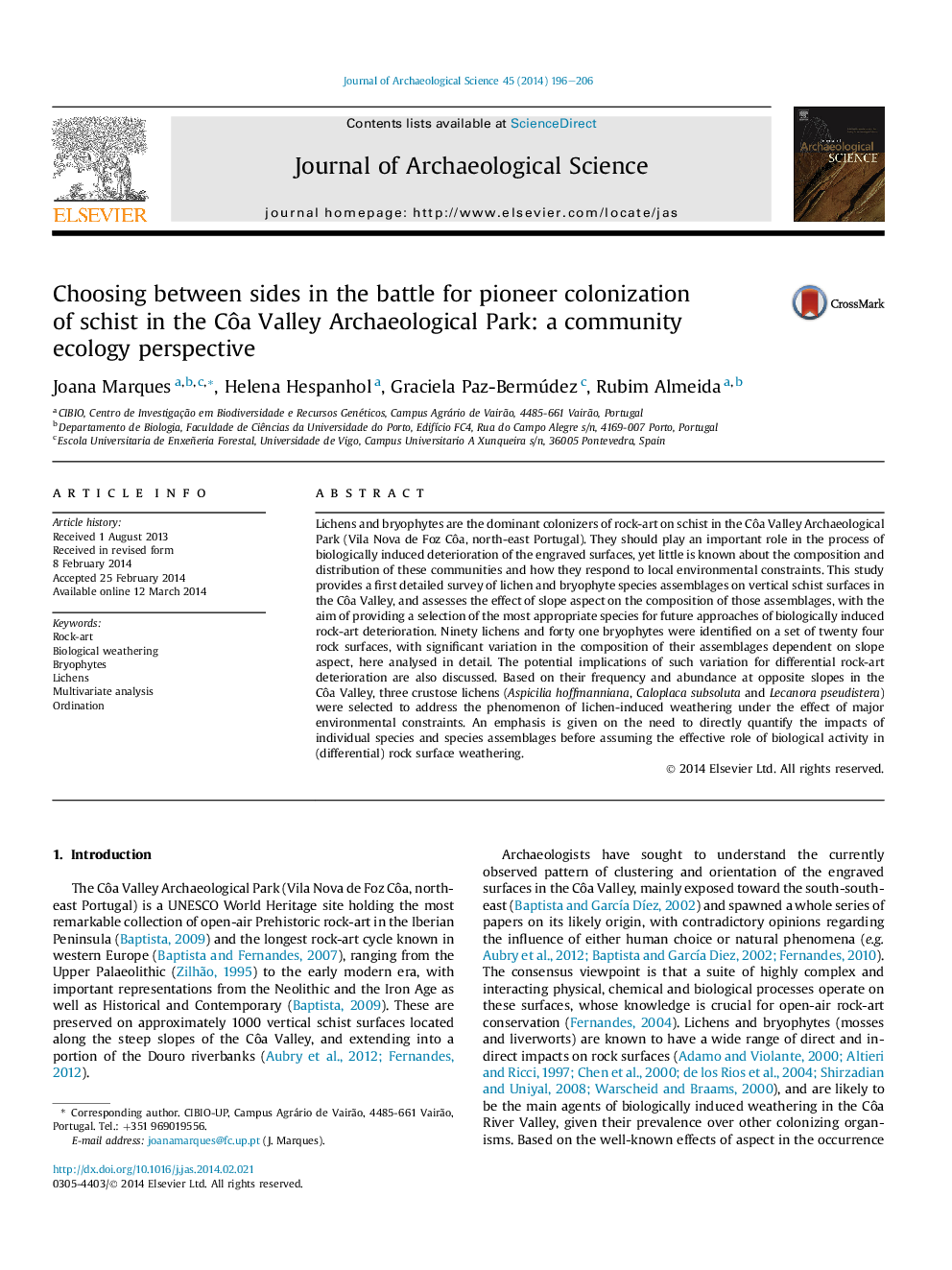| Article ID | Journal | Published Year | Pages | File Type |
|---|---|---|---|---|
| 7443488 | Journal of Archaeological Science | 2014 | 11 Pages |
Abstract
Lichens and bryophytes are the dominant colonizers of rock-art on schist in the Côa Valley Archaeological Park (Vila Nova de Foz Côa, north-east Portugal). They should play an important role in the process of biologically induced deterioration of the engraved surfaces, yet little is known about the composition and distribution of these communities and how they respond to local environmental constraints. This study provides a first detailed survey of lichen and bryophyte species assemblages on vertical schist surfaces in the Côa Valley, and assesses the effect of slope aspect on the composition of those assemblages, with the aim of providing a selection of the most appropriate species for future approaches of biologically induced rock-art deterioration. Ninety lichens and forty one bryophytes were identified on a set of twenty four rock surfaces, with significant variation in the composition of their assemblages dependent on slope aspect, here analysed in detail. The potential implications of such variation for differential rock-art deterioration are also discussed. Based on their frequency and abundance at opposite slopes in the Côa Valley, three crustose lichens (Aspicilia hoffmanniana, Caloplaca subsoluta and Lecanora pseudistera) were selected to address the phenomenon of lichen-induced weathering under the effect of major environmental constraints. An emphasis is given on the need to directly quantify the impacts of individual species and species assemblages before assuming the effective role of biological activity in (differential) rock surface weathering.
Related Topics
Physical Sciences and Engineering
Materials Science
Materials Science (General)
Authors
Joana Marques, Helena Hespanhol, Graciela Paz-Bermúdez, Rubim Almeida,
